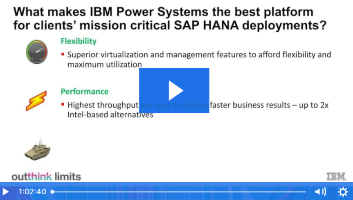Data Integrity and Transformation Go Hand in Hand
By John Yuva, Senior Editor, SAPinsider
Technological innovation enables digital transformation. In his Enterprise Data and Analytics report, SAPinsider’s Kumar Singh explains that the commoditization of technology continuously lowers barriers to entry across industries, enabling smaller, nimble, and agile companies to disrupt larger and more established businesses. The report surveyed 291 members of the SAPinsider community. The purpose of the survey was to understand key aspects that are driving the focus on data and analytics, which data and analytics requirements respondents are looking at, which specific capabilities they plan to build, and how they plan to build those capabilities.
“New business models, products, and services are being launched on a daily basis by new entrants, forcing incumbent organizations to look for new ways to create competitive advantages and differentiators. Data and analytics have become prominent tools among many that organizations plan to leverage to manage the new realities better,” Singh says.
Explore related questions
To learn more about how this topic is being addressed and explored by SAP partners, SAPinsider sat down with Prospecta CEO and co-founder Ranjan Bakshi to discuss all things data and how the company’s mission is to empower enterprises to take control of their data. Two decades spent growing Prospecta, and SAP practice expertise from his time at KPMG, have led Bakshi to a wealth of insights into enterprise data, data health, and data culture.
Data and Transformation
Bakshi says that data quality plays an important role at the beginning of a transformation initiative. “If your core data, like your spare parts or your heavy assets in manufacturing or your information around your suppliers, are not accurate or complete, it’s very hard to enable these transformational projects.”
The business intelligence is not based on consultant or supplier phone calls and visits, but the data that is at a company’s fingertips, Bakshi adds. Thus, the outcomes of these transformational projects are really based on the quality and accuracy of their data.
A transformation project can suffer, says Bakshi, “when you lack a common ground of standards or a collaborative way of doing things, because what your data is communicating must be understood by the other side,” Bakshi says. “That’s the key reason why data quality is now so critical for digital transformations.”
Our research shows that respondent companies are taking a close look at their data and analytics portfolio and capabilities, suggesting that they understand the value of quality data. Driving SAPinsiders’ data and analytics strategy, according to our report, are considerations for modernizing their data and analytics infrastructure (58%) and building a culture of data-driven decision-making (57%).
Take Data Ownership
Despite the criticality of data, misconceptions continue. One of the biggest misconceptions about poor data is that the problem can simply be outsourced. Companies believe that a vendor is capable of untangling 20 years of disparate data with a software tool. It doesn’t work that way, says Bakshi. Instead, companies need to own the problem from the start because they know their data better than anyone. Additionally, people within organizations who have a passion for data are being asked to build business cases and design data solutions and determine the return on investment.
“You don’t need a business case for a data quality solution. If you have billions invested in transformation and other areas, you just need quality data. It becomes a prerequisite, not a business case by itself,” Bakshi says. “When implementing an Internet of Things or another technology initiative, the first thing your consulting partner will ask is if you have your data right.”
Imbed a Data Culture From the Top
Addressing data quality and committing to it long term doesn’t originate in the bowels of the organization. It begins from the top of the enterprise. Bakshi says as digitization becomes ever-more important today, senior executives must embrace that responsibility and commit to that requirement. However, more is needed to drive that commitment across the enterprise. Despite the progress, Bakshi says companies still have a long way to go. The good news is the emergence of organizational roles such as data governance officer or chief data officer that didn’t exist five or seven years ago.
“Because the roles are in their infancy, however, it’s like they’re sitting on an island. The roles don’t include any business interaction in the quest to find solutions to data problems,” Bakshi says. “Ultimately, data initiatives must be led from the top. You can be tactical on the ground or have a line of business focused on spare parts, but in the end, you need an overall leadership and executive direction.
“Enterprises are doing much better than five years ago,” he adds. “On a positive note, I am seeing companies making data quality a priority as a critical step in their projects.”
For example, spare parts inventory management and optimization has always been a challenge due to issues with predictability of demand. This challenge gets exacerbated because of data quality issues. Today, most companies are still managing their MRO spare parts without any standard procedure and lack data quality in the absence of a proper governance framework.
This is a big hindrance in inventory optimization and management of spare parts. Leveraging a data quality enhancement tool has helped organizations improve their inventory optimization initiatives significantly, resulting in cost and process efficiency.
Technology to Bring Data Health and Standards Together
With KPIs identified, what is the answer for long-term data health? Bakshi says companies need to start building KPIs around data throughout their enterprise — for example, accuracy of data, meeting industry standards, reduction in number of data issues, and level of data preparedness during transformational projects.
Many KPIs, like business value metrics or data management progress metrics, focus on process efficiency targets and numbers, but not on data quality. There is a critical need to focus on data excellence metrics that focus on quantitative assessment of data’s “fitness for use.” These will focus on aspects like consistency, accuracy, etc. Also, companies need to start empowering their users with data responsibilities. This means enacting data governance rather than offloading those responsibilities to a data steward.
How do Prospecta’s solutions support enterprise data strategies and transformation? The company’s Master Data Online (MDO) is a Software-as-a-Service enterprise data platform with two important competencies: master data management (MDM) and data intelligence workbench (DIW).
“MDO became the core solution because we realized that we needed to focus on just one product. And with data becoming a bigger challenge, it made sense that our roadmap extends across the supply chain industry,” Bakshi says.
The MDO DIW solution focuses on three critical areas in the market: enabling digital transformation with data readiness, helping with standards and compliance, and increasing collaboration within teams and lines of business.
“Solutions like Data Intelligence Workbench (DIW) or even our Master Data Management (MDM) solutions are all centered around users taking more responsibility on data and making it easier where understanding the technological intricacies is not required,” Bakshi says.
He also advises integrating more data standards into business processes. Whether it’s asset standards like ISO14224, master data standards like ISO8000, or GS1, they all have a long history in the marketplace and continue to develop new standards for greater organizational efficiencies.
“Start embracing them and integrating these standards into your business. Because you’re doing business with other countries and running transactions, having the same standard helps maintain a high level of data communication,” Bakshi says.
Finally, he says data integrity must be a board topic. “I’d like to see in board meetings one statistic of how good the data is in their organization. All the important decisions in the board meeting are based on the strength of their data. Bring it to the forefront with intention.”
What Does This Mean for SAPinsiders
- Explore technologies that promote and emphasize a self-service approach. Maintaining data integrity and ensuring governance rules are adhered to is more the responsibility of the individual user today — not the IT department. Self-service allows employees to find the specific data necessary for their projects, while providing IT the opportunity for a broader strategic approach toward enterprise data management.
- Don’t create a business case for data quality. In today’s technology landscape, the consequences of poor data quality should speak for themselves. Before investing in a business case for a data quality solution, simply consider the time and monetary costs of poor data and its impacts on time and costs that you’ve invested in your transformation project. As Bakshi says, quality data is a prerequisite for transformation, not a business case.
- Search for data outliers. Don’t overlook data outliers that may signal new opportunities. When companies have clean data, any data outliers are worth exploring because of the accuracy of the information they’re working with.







